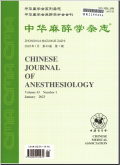围术期感染和手术应激诱发的炎症反应与小鼠术后认知功能障碍的关系
Relationship between inflammatory responses induced by perioperative infection and surgical stress and postoperative cognitive dysfunction in mice
摘要目的:评价围术期感染和手术应激诱发的炎症反应与小鼠术后认知功能障碍的关系。方法健康雄性C57BL∕6小鼠144只,8~12周龄,体重20~25 g,采用随机数字表法分为4组( n=36):对照组(C组)、手术组(S组)、感染组(I组)和感染+手术组(I+S组)。 S组行胫骨骨折开放复位内固定术;I组从术前1 d开始每天于同一时点腹腔注射LPS 100μg∕kg,连续5 d;I+S组从术前1 d开始每天于同一时点腹腔注射LPS 100μg∕kg,连续5 d,手术当天注射LPS 2 h时行胫骨骨折开放复位内固定术。分别于术后1和3d时进行条件性恐惧实验测定认知功能,计算僵直时间比率,取外周静脉血样,采用ELISA法检测血浆IL?6、IL?1β的浓度,处死小鼠取海马组织,采用ELISA法检测海马组织IL?6、IL?1β和前列腺素E2的含量。结果与C组比较,S组和I+S组术后1和3 d时僵直时间比率降低,海马组织IL?6、IL?1β和前列腺素E2的含量升高,S组术后1 d时血浆IL?6和IL?1β的浓度升高,术后3 d时血浆IL?1β浓度升高,I组和I+S组术后1和3 d时血浆IL?6和IL?1β的浓度升高(P<0.01),I组术后1和3 d时僵直时间比率差异无统计学意义(P>0?05);与S组或I组比较,I+S组术后1和3 d时僵直时间比率降低,血浆IL?6和IL?1β的水平升高,海马组织IL?6、IL?1β和前列腺素E2的含量升高( P<0.01)。结论围术期感染和手术应激诱发的炎症反应可加重小鼠术后认知功能障碍。
更多相关知识
abstractsObjective To evaluate the relationship between inflammatory responses induced by perioperative infection and surgical stress and postoperative cognitive dysfunction in mice. Methods One hundred forty?four healthy male C57BL∕6 mice, aged 8-12 weeks, weighing 20-25 g, were divided into 4 groups ( n=36 each) using a random number table: control group ( group C) , surgery group ( group S) , infection group ( group I) , and infection+surgery group ( group I+S) . In group S, the open reduction and internal fixation was performed after tibial fracture was induced. Lipopolysaccharide ( LPS) 100 μg∕kg was injected intraperitoneally at the same time every day for 5 consecutive days starting from 1 day before surgery in group I. In group I+S, LPS 100 μg∕kg was injected intraperitoneally at the same time every day for 5 consecutive days starting from 1 day before surgery, and the open reduction and internal fixation was per?formed after tibial fracture was induced at 2 h after LPS injection on the day of surgery. Contextual fear con?ditioning test was performed on 1 and 3 days after surgery, and cognitive function was assessed. The rate of freezing time was calculated. The peripheral venous blood samples were collected for determination of plas?ma interleukin?6 ( IL?6) and IL?1β concentrations by enzyme?linked immunosorbent assay. The animals were then sacrificed, and the hippocampi were isolated for determination of IL?6, IL?1β and prostaglandin E2 ( PGE2 ) contents in hippocampal tissues by enzyme?linked immunosorbent assay. Results Compared with group C, the rate of freezing time was significantly decreased on 1 and 3 days after surgery, and the contents of IL?6, IL?1βand PGE2 in hippocampal tissues were significantly increased on 1 and 3 days after surgery in S and I+S groups, the concentrations of plasma IL?6 and IL?1βwere significantly increased on 1 day after surgery, and the concentration of plasma IL?1βwas significantly increased on 3 days after surgery in group S, the concentrations of plasma IL?6 and IL?1β were significantly increased on 1 and 3 days after surgery in I and I+S groups ( P<0?01) , and no significant change was found in the rate of freezing time on 1 and 3 days after surgery in group I ( P>0?05) . Compared with group S or group I, the rate of freezing time was significantly decreased on 1 and 3 days after surgery, and the concentrations of IL?6 and IL?1βin plasma and contents of IL?6, IL?1β and PGE2 in hippocampal tissues were significantly increased on 1 and 3 days after surgery in group I+S ( P<0?01) . Conclusion Inflammatory responses induced by periopera?tive infection and surgical stress can aggravate postoperative cognitive dysfunction in mice.
More相关知识
- 浏览276
- 被引16
- 下载204


相似文献
- 中文期刊
- 外文期刊
- 学位论文
- 会议论文



 换一批
换一批 换一批
换一批



